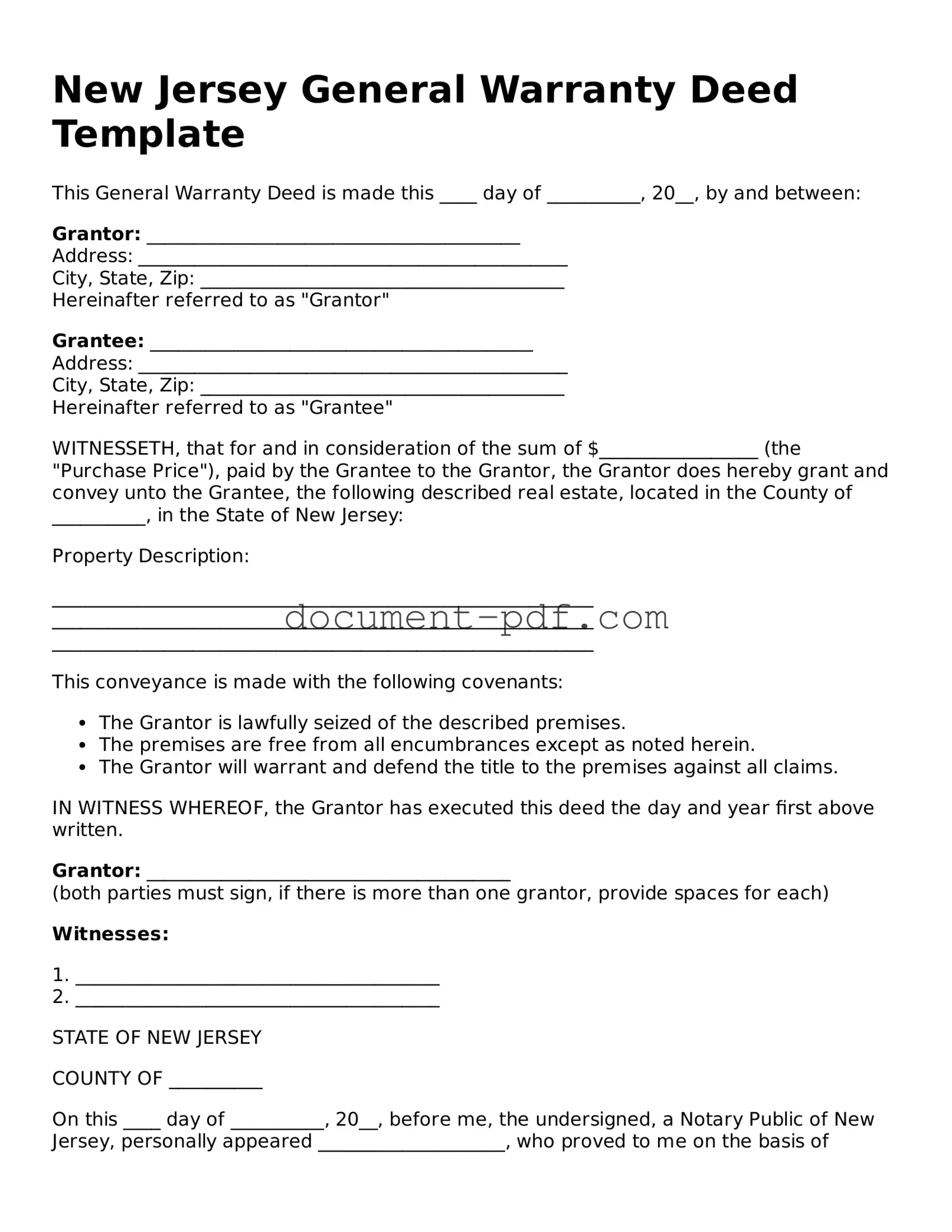New Jersey General Warranty Deed Template
This General Warranty Deed is made this ____ day of __________, 20__, by and between:
Grantor: ________________________________________
Address: ______________________________________________
City, State, Zip: _______________________________________
Hereinafter referred to as "Grantor"
Grantee: _________________________________________
Address: ______________________________________________
City, State, Zip: _______________________________________
Hereinafter referred to as "Grantee"
WITNESSETH, that for and in consideration of the sum of $_________________ (the "Purchase Price"), paid by the Grantee to the Grantor, the Grantor does hereby grant and convey unto the Grantee, the following described real estate, located in the County of __________, in the State of New Jersey:
Property Description:
__________________________________________________________
__________________________________________________________
__________________________________________________________
This conveyance is made with the following covenants:
- The Grantor is lawfully seized of the described premises.
- The premises are free from all encumbrances except as noted herein.
- The Grantor will warrant and defend the title to the premises against all claims.
IN WITNESS WHEREOF, the Grantor has executed this deed the day and year first above written.
Grantor: _______________________________________
(both parties must sign, if there is more than one grantor, provide spaces for each)
Witnesses:
1. _______________________________________
2. _______________________________________
STATE OF NEW JERSEY
COUNTY OF __________
On this ____ day of __________, 20__, before me, the undersigned, a Notary Public of New Jersey, personally appeared ____________________, who proved to me on the basis of satisfactory evidence to be the person whose name is subscribed to the within instrument, and acknowledged that he/she executed the same in his/her capacity.
Notary Public Signature: _______________________________
My Commission Expires: _______________________________
